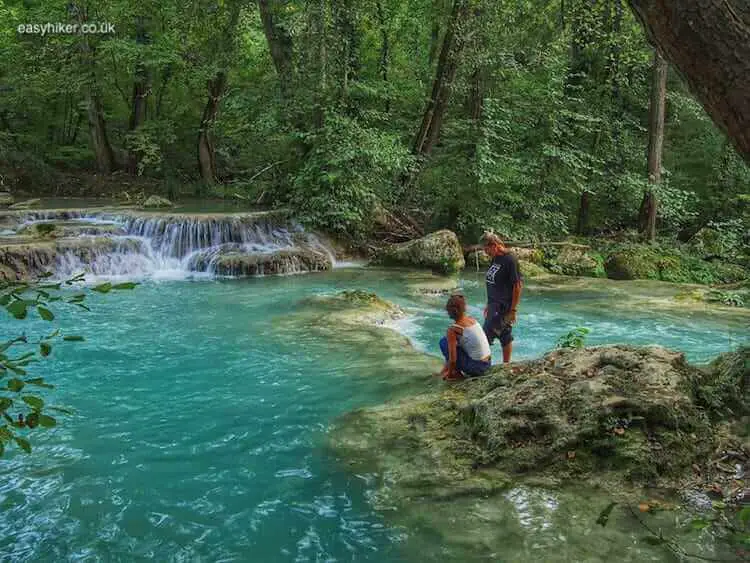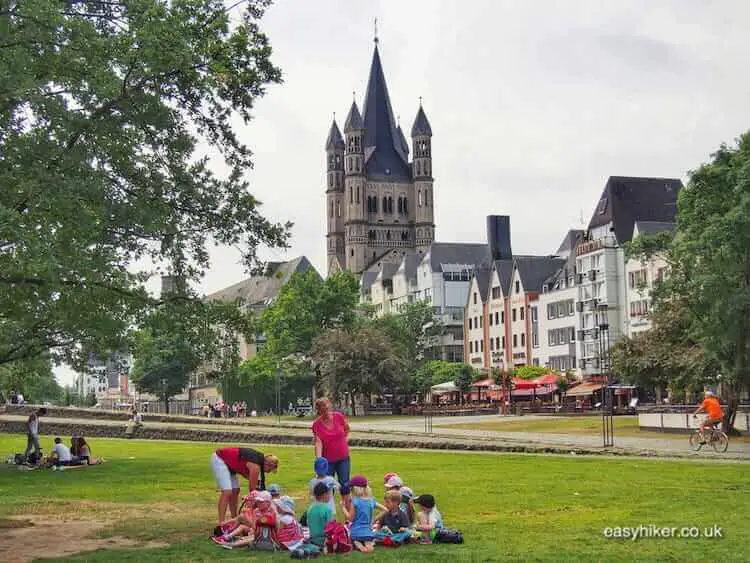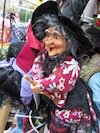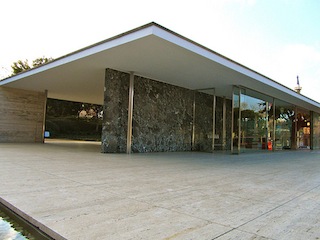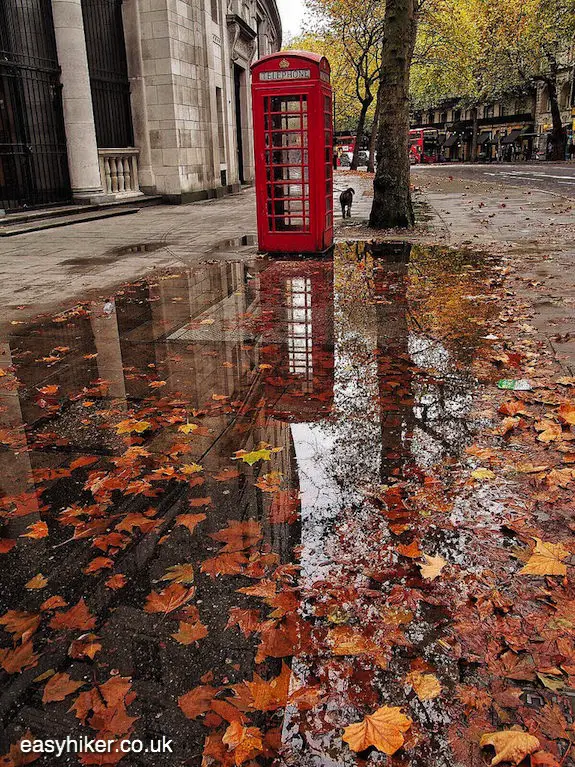Ready for more “Cologne through the prism of its Romanesque architecture”? All right then, here we go.
This week, we shall visit six more early medieval churches, now turning our attention to the southern half of Cologne’s Old Town.
We will walk through some pretty and picturesque streets with much local atmosphere, making sure that there is a lot to see even if your interest in early Christian architecture is somewhat limited.
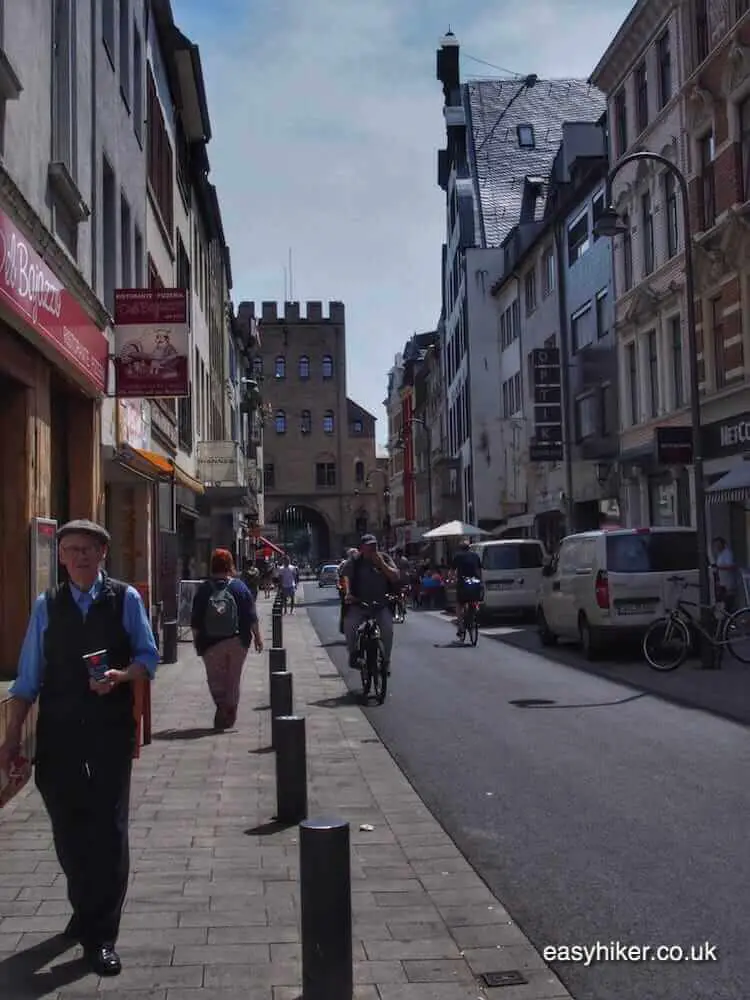
Discovering Romanesque Architecture in Cologne
You are free to do whatever you like, of course: completing Part One of our walk in its entirety before turning your attention to Part Two for example.
We suggest you change the order of your visit if you want to see all twelve churches rather than concentrating on the ones in the dead city centre.
After church no. 2 on last week’s list, rather than turning inland, continue along the river Rhine for a short while and re-join – after today’s part of the walk – last week’s list at no. 3.
Which means that we start today’s itinerary at Gross St Martin.
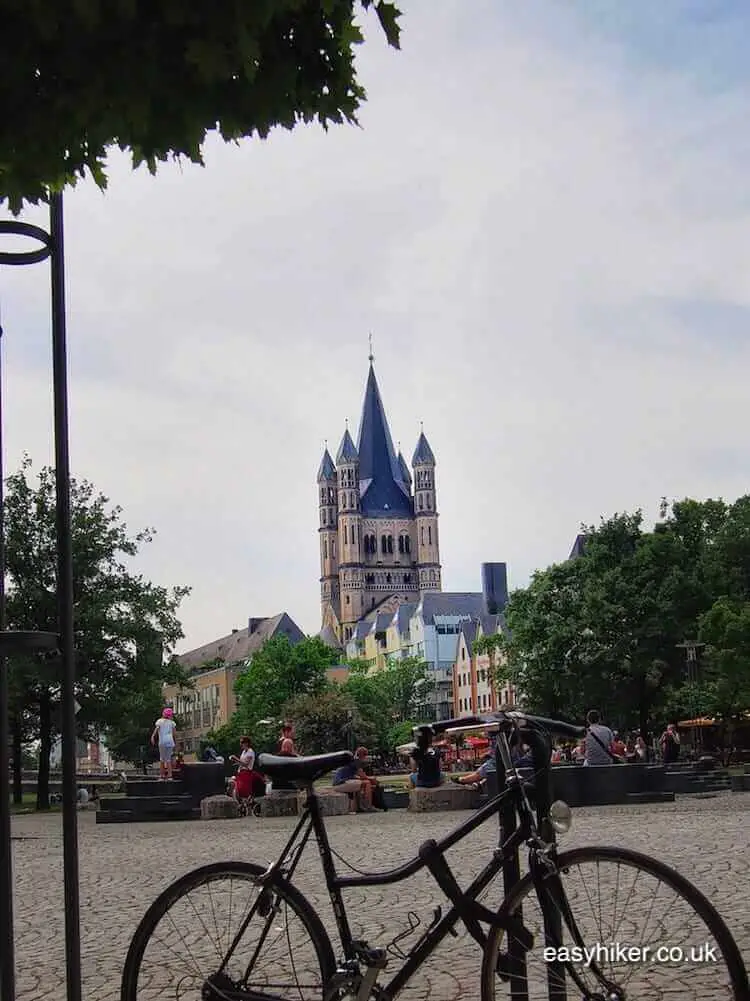
Behind the bridge over the Rhine, turn right into Heumarkt and, after the bend in the road, into Piectrudengasse.
You will be able to see St Maria im Kapitol already, the largest of Cologne’s Romanesque churches, as it shimmers through the modern urban fabric, but walk around the complex counter clockwise to find the entrance.
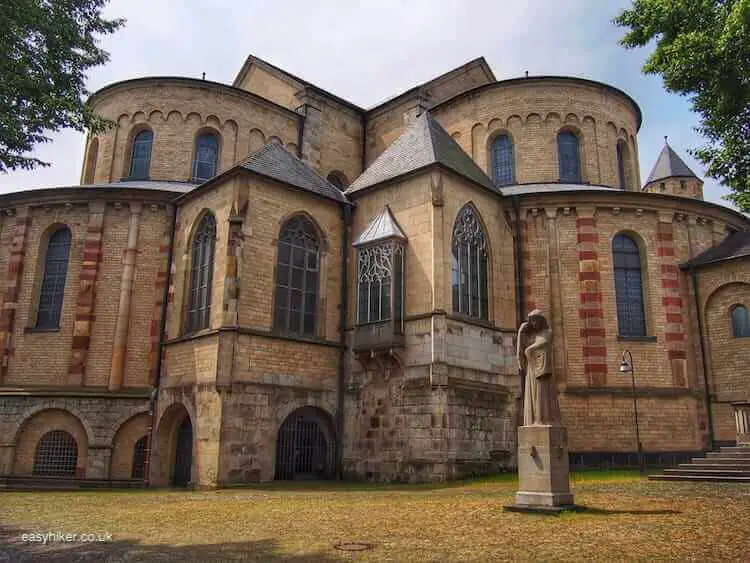
St Maria was built as an abbey church in the 7th century on the foundations of a Roman temple (from around 50 AD). The oldest element of the monastery complex (from the 11th century) is the cloister …
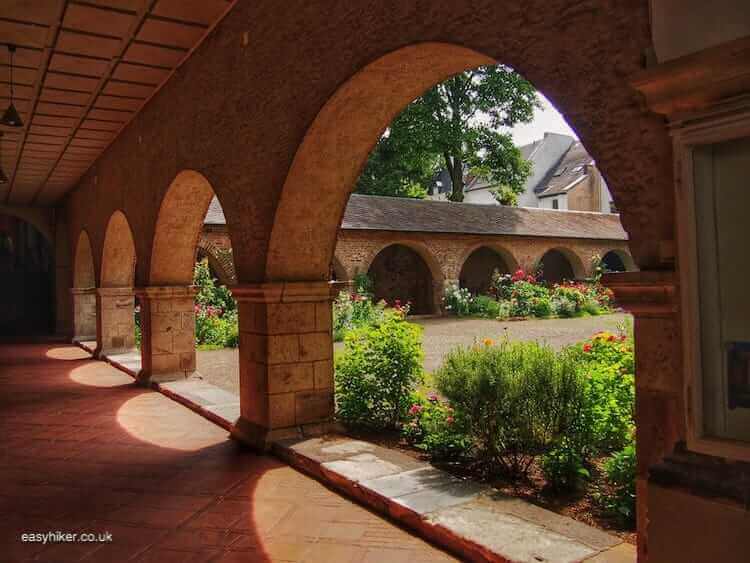
… and the strangest object is the two-metre long bone from a whale’s rib cage which is hanging over one of the confessional booths.
What the medieval folks in Cologne made of the bone and why they thought it deserved a place in their church, we can only guess.
The choir of St Maria is rather dark and gloomy, giving us some idea of what the church must have felt like in its prime, while sculptures and wall paintings from different eras remind us that you cannot look at a church in the same way that you are looking at a painting or a sculpture.
While those remain (essentially) unchanged and look the same today as they did at the time when they were made, churches develop over time and reflect every period of their life span.
Seen like that, churches are the most “organic” works of art, and visiting an old church is like entering a conversation with your grandparents .
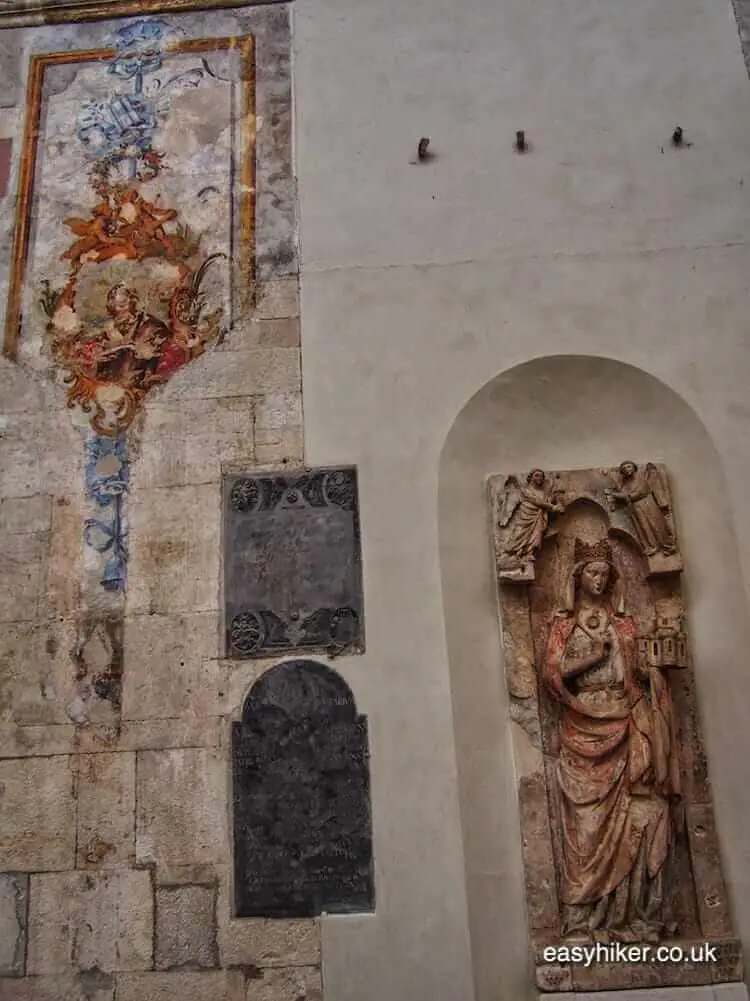
This is true for church interiors, but sometimes for their exteriors, too – as in the case of St Georg one block away (down the Hohe Pforte into Waldmarkt).
The building was originally designed as an oratorium in late antiquity, following which it was first consecrated as a church in the 11th century.
The first reconstruction was already performed after 100 years, but plans were changed several times during the building period, and in later centuries, Renaissance and Baroque additions were meant to ensure that the church kept up with contemporary trends.
None of these later architectural additions were restored after their destruction in WWII, which only goes to show that restorations, too, reflect the tastes and fashions of their time. New decorative elements, meanwhile, were being added all the time until recently.
Still, the church’s squat exteriors – of which, unfortunately, not much can be seen right now since St Georg is under major reconstruction – betray its ancient origins.
Experts believe it is possible that parts of the old Roman town wall – a guardhouse, maybe – were integrated into the antique oratorium.
Follow Georgstrasse and Witschgasse back to the river for St Maria Lyskirchen, traditionally Cologne’s church for the Rhine’s boatmen and barge traders …
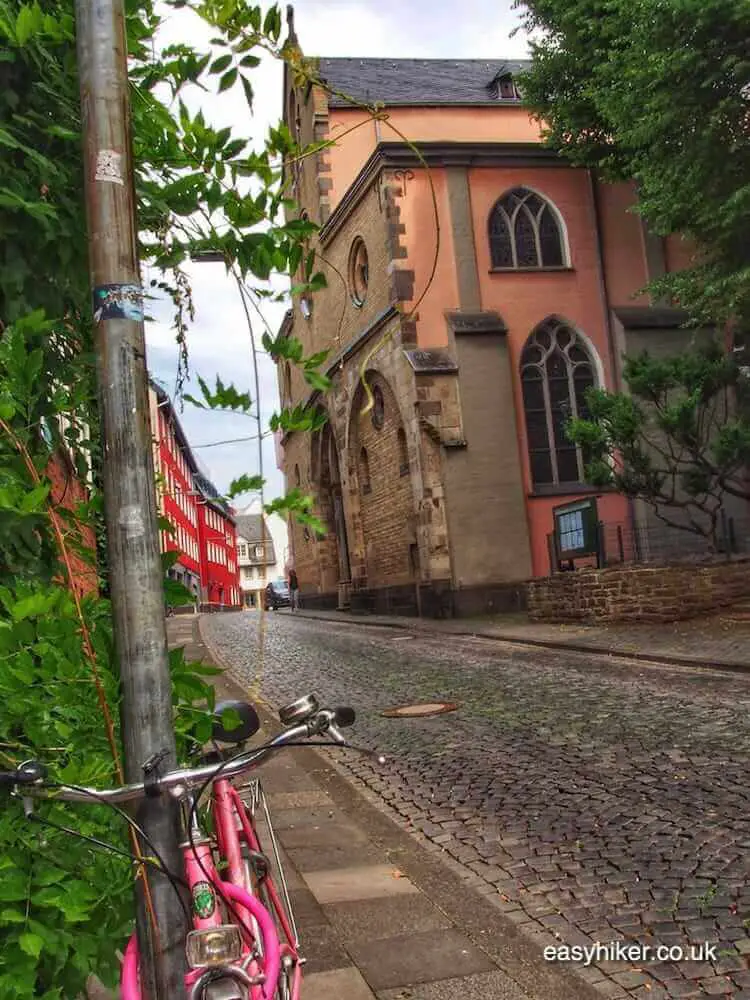
… and the smallest of the “Romanesque 12”. It suffered only relatively little damage in WWII and is the only one whose roof has remained largely intact.
Across the small bridge on the Rheinau peninsula, you can find the old customs port, now converted into a modern leisure and office complex (featuring Cologne’s highly popular Chocolate Museum: you are looking straight at it).
Walk heroically past and turn right into Am Zollhafen …
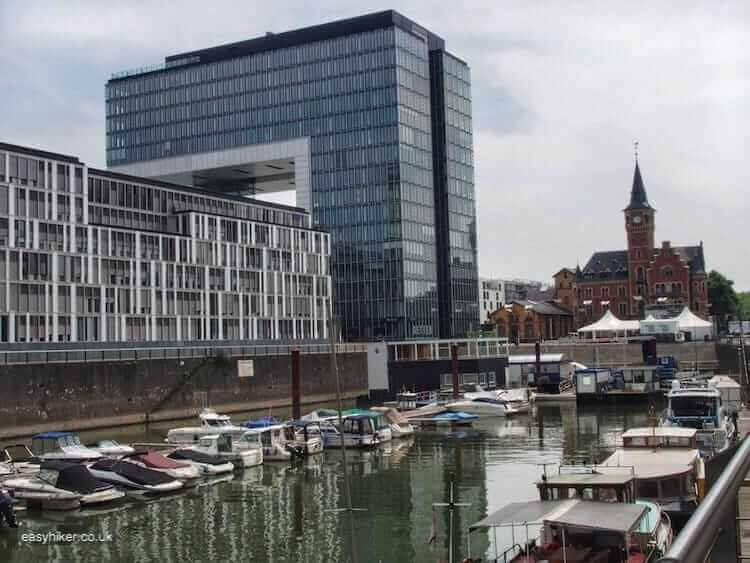
… and just before reaching the old customs house, turn right into Dreikönigenstrasse.
You are now in the St Severin quarter, formerly the home of the Stollwerck chocolate factory (now a municipal events centre) and undoubtedly of many of the people who worked there.
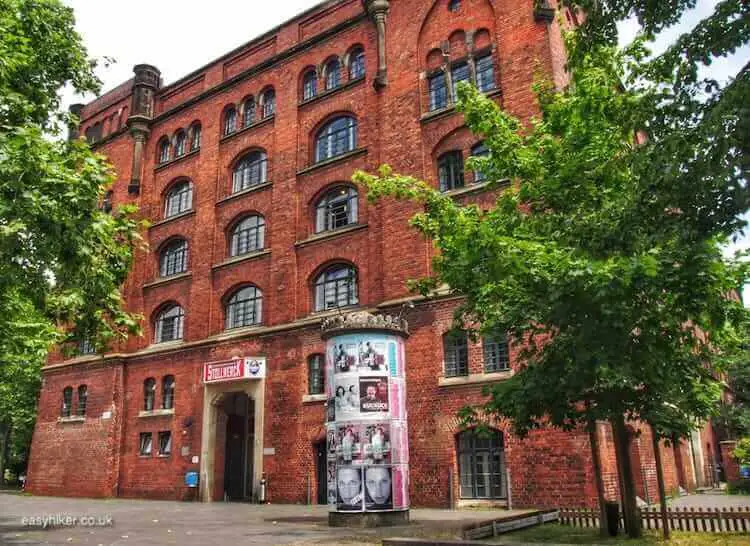
Today, however, St Severin is a very attractive, “Bourgeois-Bohemian” neighbourhood. Soon, you will reach St Severin church, which gave its name to the entire quarter.
St Severin has a late Gothic tower …
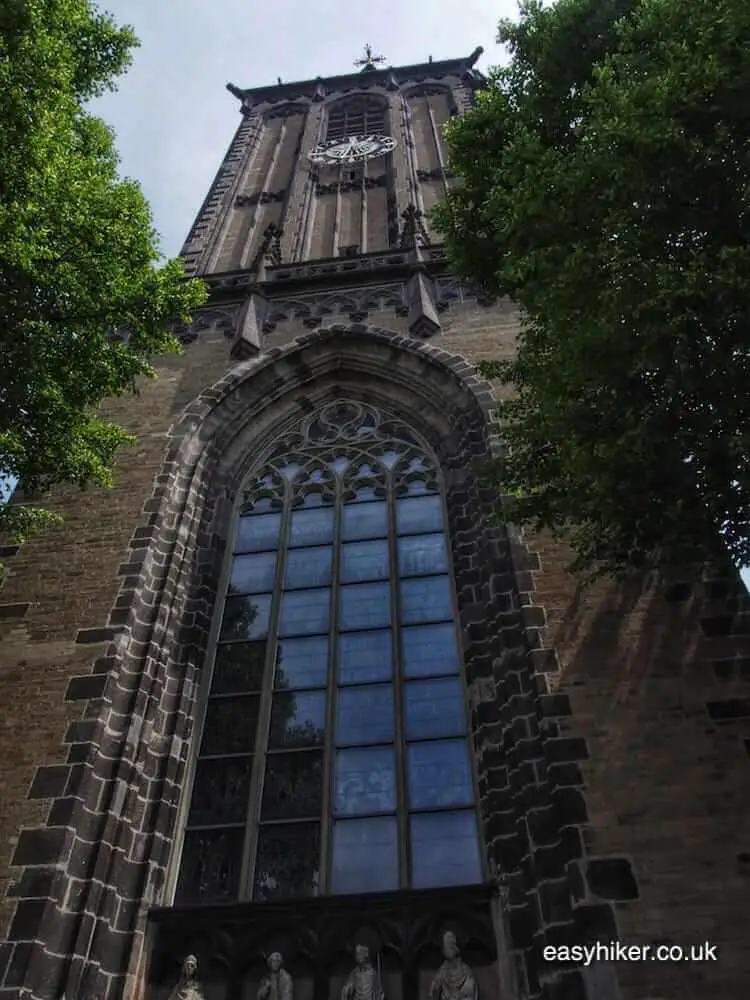
… and from the inside looks like a late Gothic or neo-Gothic church, …
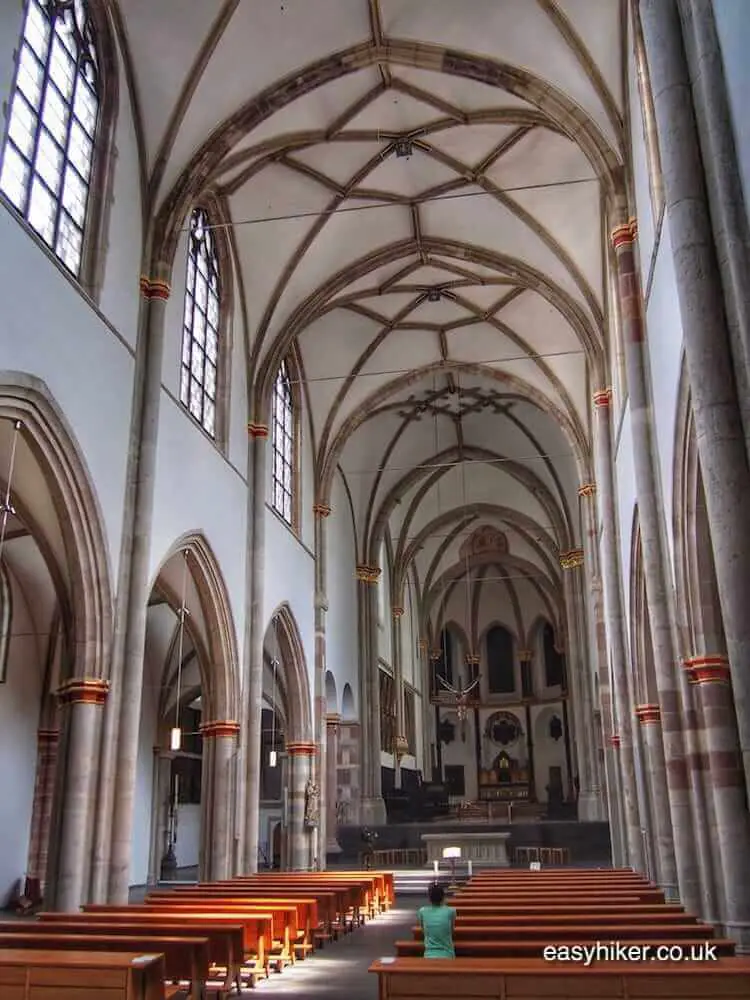
… but goes back in fact to the 4th century when it was built as a cemetery chapel.
Today’s Severinstrasse was then the main road from Cologne to Aachen and lined by graves that, according to Roman custom, were not permitted within the city walls.
For the church’s Romanesque elements, look at the oldest part the octagonal choir section in the east, the part you see first when you arrive turning left from Dreikönigenstrasse into Severinskloster.
Walk into Kartäusergasse (on the western, the “tower” side of the church) and its continuation, called Vor den Siebenburgen, to St Pantaleon …
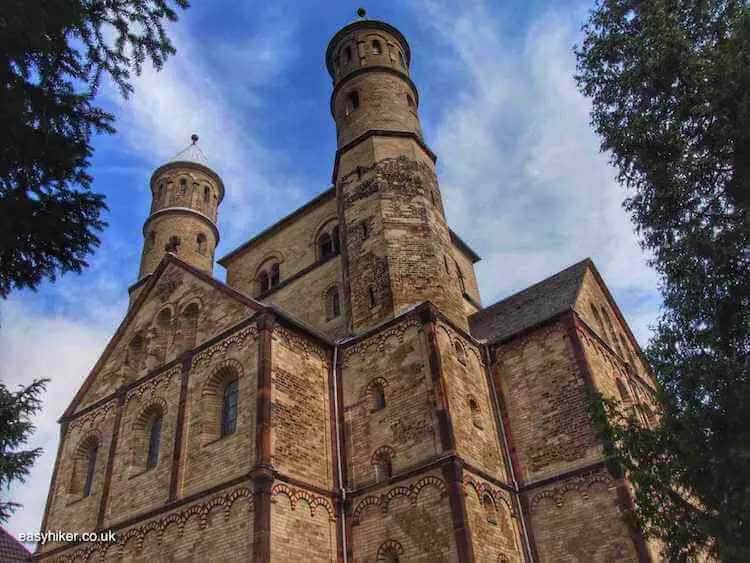
… which can boast of the most checkered background among all of Cologne’s ancient churches.
Having started its existence as a Roman villa, it was later turned into a Merovingian mausoleum before being extended to a church in the period of Charlemagne (which was also when it was first dedicated to St Panteleimon, the martyred physician of the Byzantine Emperor Maximian).
Later, the building served as a stable for Napoleon’s cavalry and as a telegraph station for the Prussians. It was only reconverted into a Catholic parish church in 1923.
The interiors still retain much of their original Byzantine flavour …
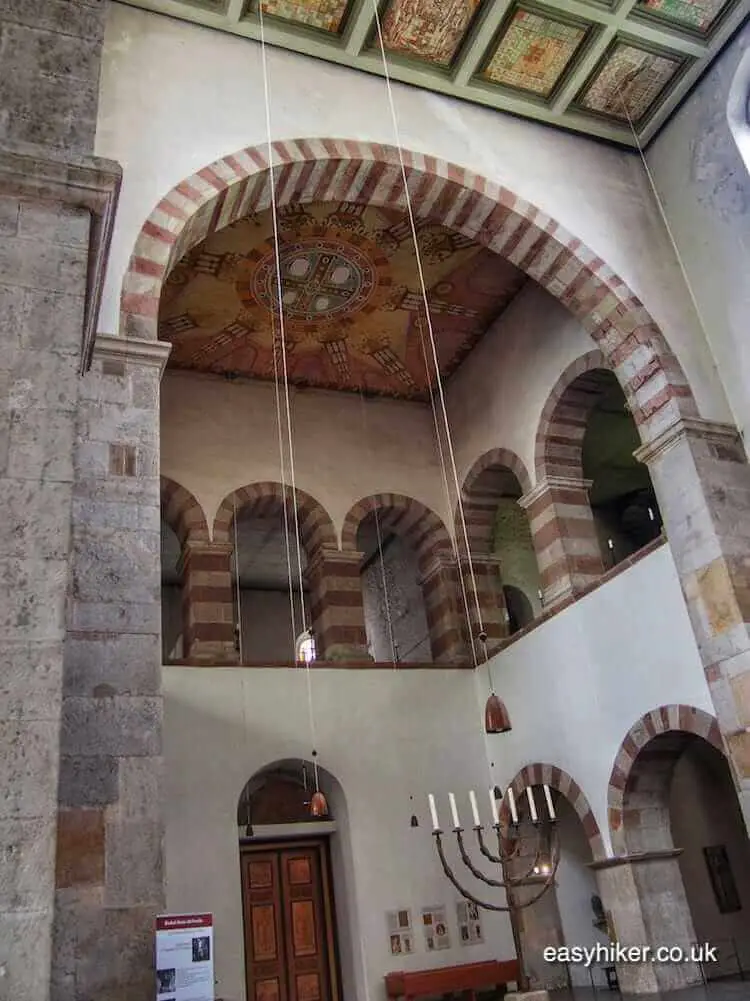
… which is fitting for the final resting place of Theophanu, the niece of one Emperor (John I Tzimiskes of Constantinople) and the wife of another (Otto II of the Holy Roman Empire).
Her marriage to Otto may have been a product of diplomatic necessities, but its consequences have reached way beyond the power constellations of the late 10th century: northern architecture would have developed differently without the influence of her and her retinue.
It is also said that the veneration of Saint Nicholas was an import of her Byzantine customs. No Theophanu, no Santa Claus. Think about that: if it had not been for her, who would bring your Christmas presents?
Leave the area through Am Weidenbach and continue straight, across the busy main road, into Kleiner Griechenmarkt (the “Small Greek Market”: another trace of Theophanu and her countrymen).
At the roundabout, turn right and then immediately left into Peterstrasse. Across the next main road, you can already spot the Schnütgen Museum for Medieval Art into which one of Cologne’s Romanesque churches has been integrated …
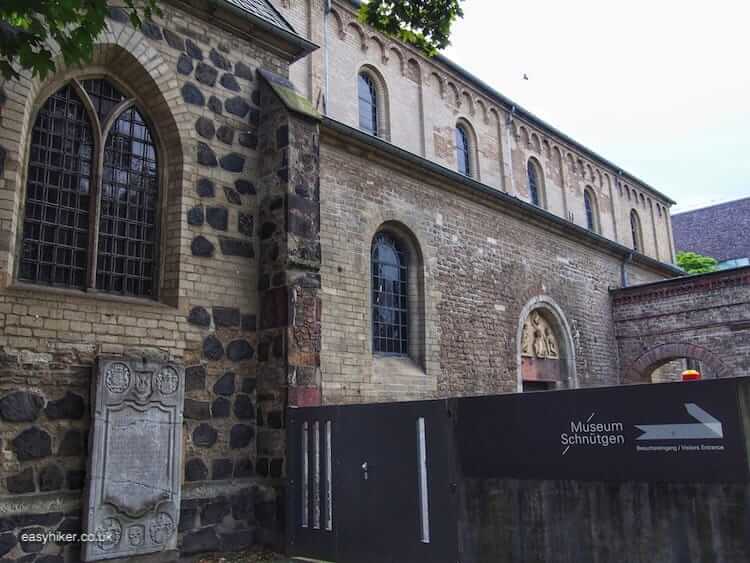
… the modestly scaled St Cecilia, for centuries regarded as the “ugly sister” among the town’s Romanesque churches.
One reason why St Cecilia is so small is that the order of nuns which had commissioned the church ran into financial difficulties.
Eventually, they had to cut their architectural coat to the available cloth – and even then were only able to complete the building works thanks to a generous deathbed donation of Cologne’s Archbishop.
Continue on your left hand side left to Neumarkt. On the far side of the busy market square, you will find St Aposteln.
Now re-join the route as described in last week’s Part One for this search of romanesque architecture in Cologne.
If you decide to take the full walk with all 12 churches to sample romanesque architecture in Cologne, you will – at some stage – require some form of sustenance. You need not worry: you will pass literally dozens of places where you can eat, and there is bound to be something for every taste.
We scheduled our own fuel stop for the St Severin quarter: roughly at the half-way point of the full route, and there is a wide choice of non-touristy, non-fast-foody but very affordable places.
If you can wait a little longer, we can also recommend that you – after your visit to St Aposteln, between Albertusstrasse and Spiesergasse – turn left on Friesenstrasse (instead of crossing it) for Brauerei Päffgen where they serve the traditionally light local beer (called Kölsch) alongside a wide range of local specialties.
We have covered Päffgen on another occasion here. This may be the best address in Part One of the walk.
Cologne has many other local breweries, some of which you may even find along the route, and we have by no means tried them all, but a visit to Päffgen – particularly on a sunny day on their shaded outside terrace – is a great way of rounding off your day out.

